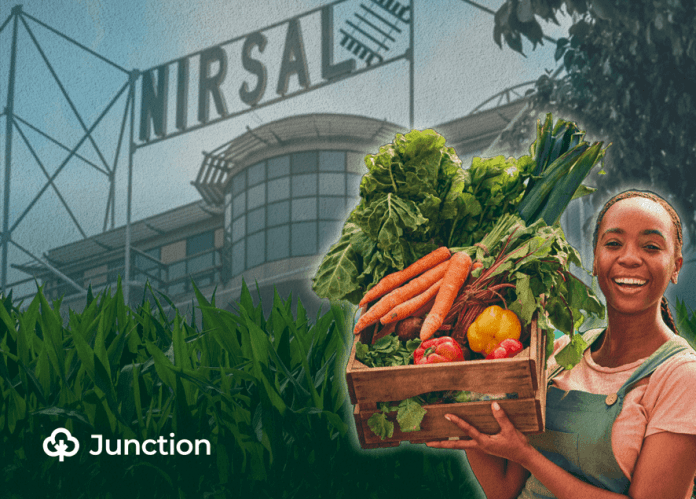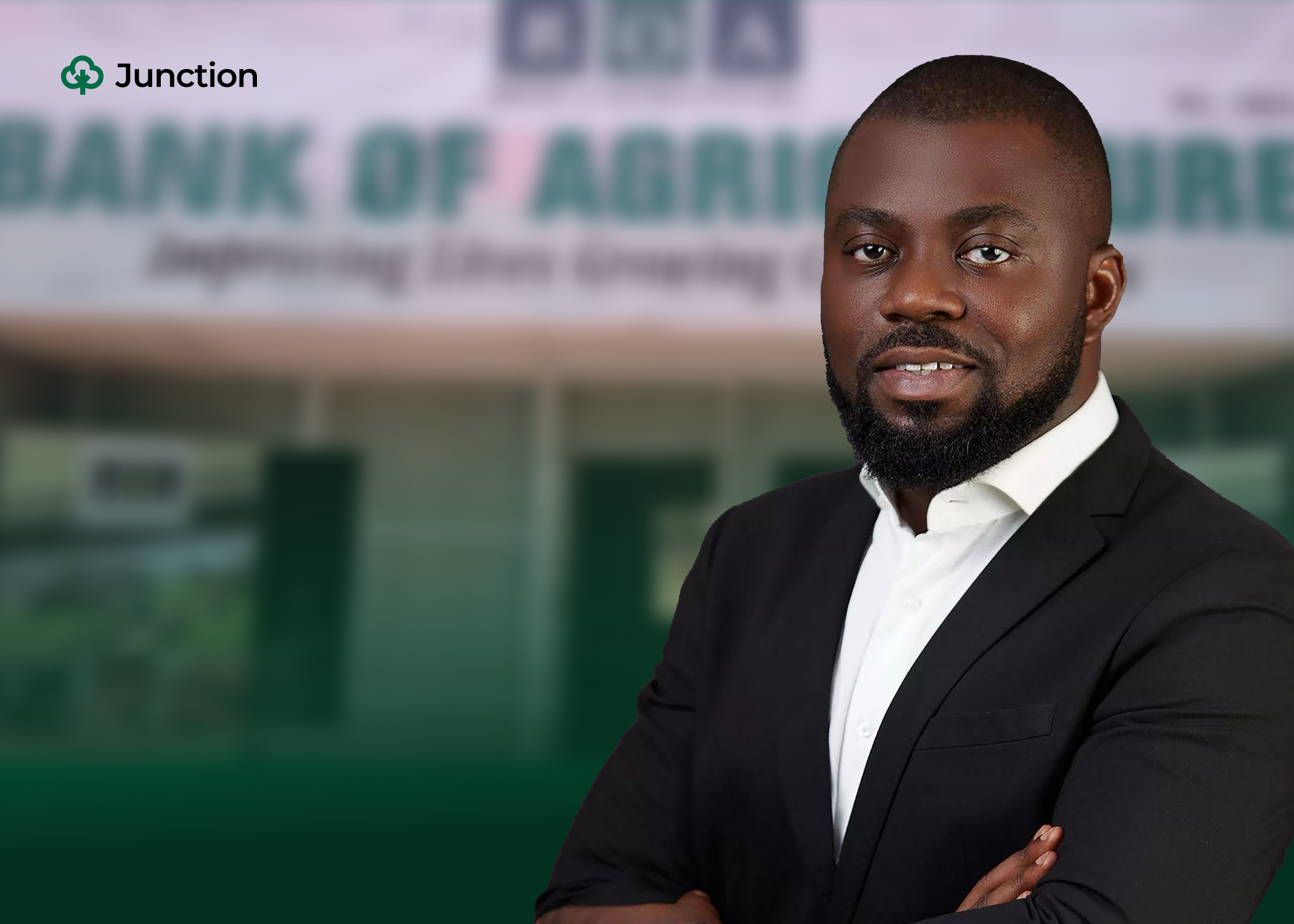Questions answered here:
– What major roles should NIRSAL play in Nigeria’s agricultural sector finanicng?
– How can intelligence improve the impact of the institution’s efforts to increase the economic contribution of agriculture?
– Why should NIRSAL increase funding for medium-holder farmers?
Nigeria approaches its agricultural development efforts from three areas, the first is policy and technical support that creates an enabling environment that should ensure and support optimal and safe agricultural production. The second is strategic and tactical initiatives that support optimal agricultural production, while the third is financing of the agriculture industry through instruments and mechanisms such as the Bank of Agriculture (BoA), Nigeria Agriculture Insurance Corporation (NAIC), Nigeria Commodity Exchange (NCX), and Nigeria Incentive-Based Risk Sharing System for Agricultural Lending (NIRSAL Plc).
The Central Bank of Nigeria (CBN), through ownership and investment in agricultural finance entities and other developmental finance interventions, takes a lead in agricultural finance. NIRSAL Plc is designed to be a front-facing entity that supports agricultural financing through its credit risk guarantee, technical support and value chain strengthening mandates. Its outlook is to galvanise the efforts of other agriculture finance entities, to form a tripod of strength in finance, insurance, and markets with a strong base of guarantees.
By design, NIRSAL Plc should complement the agriculture ministry with intentional collaboration for the transition of policies and technical capacity for effective productivity through finance and investments. Enabled by its organisation along five major pillars for the execution of its mandate, which are risk sharing, insurance, technical assistance, rating, and incentive mechanism, it seeks to deliver value-added performance by agricultural value chain actors and lenders.
As Nigeria looks to bridge its $200 billion agricultural finance deficit, NIRSAL Plc should be the pre-eminent adviser, and entity to support financial interventions in agriculture.
In specific terms, beyond guarantees, it should support the capacity development of agricultural finance stakeholders by aggregating data, creating tools for decision-making, and supporting the enlightenment of the agricultural sector and its financing. Rather than an institution which disburses credit directly to participants (mostly farmers and processors) through banks, NIRSAL should change that direct disbursement to Credit Risk Guarantee (CRG) that can go further (as much as three times leverage).
Additionally, it should support multilateral financing of agriculture by co-guaranteeing multilateral funds, and co-investment in agriculture industry enhancing efforts. It should partner with private sector players to deliver ancillary services such as rating, technical assistance and incentives that are within its mandate.
The institution should also consider some primary investments in agriculture through co-equity ownership with private sector players, in large-scale agricultural systems supporting entities such as BoA, NIRSAL MfB, NAIC, NCX, ERP, Marketplace etc. This would not only strengthen the agricultural system, but also generate billion-dollar valuations that can be exited and returned to CRG and the investment fund pool for recirculation into new debts and investments.
A focus on intelligence to improve impact
An optimised NIRSAL Plc must focus on being the intelligence provider and thought leader for agriculture finance using four major levers.
First, it needs an open effort to aggregate Nigeria’s agriculture data and make it easy to develop financial and non-financial insights and improve decision-making. Areas of coverage should be exhaustive and include productivity, financing, export, jobs, machinery, consumption, investment, etc.
The second lever is to consistently publish periodic research and studies that provide analysis and advice in the form of reports and insights to highlight the state, outlook, and future of the agriculture industry in Nigeria, while providing thought leadership on the path to growth, sustainability, and improved participation.
Third, it needs an agriculture industry-focused credit rating that is nuanced and takes both quantitative and qualitative parameters of agricultural peculiarities into consideration, to create a strong view into agricultural entities that will receive debt and investment financing. This move will deliver transparency, expertise and trust to debt and investment transactions.
Fourth is the ranking of institutional players in agriculture, that will range from financial services providers, investors, large offtakers and other providers of service and value in Nigeria’s agriculture. The ranking will create a trusted platform for presenting the capability and capacity of agriculture sector players while serving as a tool for customers and other stakeholders to make decisions on whom they will engage.

An optimised NIRSAL Plc should guarantee credit and investment financing of private sector led cardinal value chain areas, for an integrated delivery of agricultural support. These should include providers of cleared and irrigated land and other infrastructure/ amenities in integrated agricultural clusters. Service providers that will deliver services such as mechanisation, logistics, export facilitation and markets to support farm-to-table/export outlook. System-enhancing ventures that will provide system-critical services such as banking, insurance, ERP, information, markets, and integration. And participants like farmers, extensionists and processors that will deliver last mile and end of tarmac activity and value.
NIRSAL should prioritise the emerging farming class of medium-holders
NIRSAL should apply the most effort to the segment that will drive the most growth and multiplier benefits, without negating the inclusiveness of the whole agricultural ecosystem. Segmentation may be approached as follows:
- Smallholders
Size: 1-5 hectares and its equivalent in other non-crop agricultural value chain areas
Single obligor limit: ₦5 million.
Why: They have low productivity and may not adopt best practices; they are ubiquitous and engage a large proportion of the population.
Antecedent: They are the largest beneficiary group of the last financial intervention Anchor Borrowers Programme (ABP) with direct disbursement by CBN through commercial banks.
Credit disbursement vehicle: Rural microfinance bank that knows and relates with farmers directly, supported by centralised digital banking and productivity tools (insurance, ERP for customer profiling, M&E, and market) for system transparency, funds and produce traceability.
Priority: 20% of funding priority should be ascribed to this segment
2. Medium-holders
Size: 6-100 hectares and its equivalent in other non-crop agricultural value chain areas
Single obligor limit: ₦200 million.
Why: They are the most productive and fastest-growing segment in Nigeria’s agriculture. They hold about 23% of cultivated land and produce about 15% and 25% of marketed produce. They have grown their share of cultivated land holding from 7% to 18% in the ten years leading to 2018. They are educated, will adopt best practices, are commercially oriented and support smallholder and commercial agriculturists. They are large enough to scale commercially, and small enough to manoeuvre structural and macro issues.
Antecedents: There has been no deliberate intervention targeted at this segment, their results have been driven mostly by their profile and commercial orientation. Ascribed priority will deliver exponential results with multipliers to small and commercial holders.
Credit Disbursement Vehicle: National microfinance bank that knows and relates with farmers directly using centralised digital relationship management capabilities at scale, supported by digital banking and productivity tools (insurance, ERP for customer profiling, M&E and market) for system transparency, funds and produce traceability, improved productivity, market access and repayment assurance.
Priority: 60% of funding priority should be ascribed to this segment
3. Commercial holders
Size: Above 100 hectares and its equivalent in other non-crop agricultural value chain areas
Single obligor limit: ₦10 billion.
Why: They are usually plagued by macro and structural issues as they are less nimble to manoeuvre. The availability of small and medium-holders to fall back to, is making them reduce participation in primary production ventures, while relying on smallholder aggregators and medium holders for produce.
Antecedent: They have been beneficiaries of interventions such as the Commercial Agriculture Credit Scheme (CACS).
Credit Disbursement Vehicle: Commercial banks that know and relate with customers directly using centralised digital relationship management capabilities at scale.
Priority: 20% of funding priority should be ascribed to this segment.

The three segments (small, medium, and commercial) are ascribed priority using empirical analysis of their effectiveness in the utilisation of capital and other resources, and in the support of adjoining segments. NIRSAL’s support will be delivered across value chain areas of land(farm), road(logistics) factory(processing) and market (trade) for crops and value chains of focus.
As a FX earner
NIRSAL’s effort should also support the improvement of Nigeria’s foreign exchange (FX) receipts through both investment and export inflows. For example, it can support investment by deploying intentional efforts to encourage Nigeria’s diasporans to invest in the country’s agriculture through guarantees and tools for monitoring, evaluation, reporting and transparency.
It should also develop stronger relationships and co-guarantees with multilaterals such as the Multilateral Investment Guarantee Agency (MIGA) of the World Bank Group and Guarantee/Risk Management Products (RMP) of the African Development Bank (AfDB) to de-risk foreign investment and encourage participation. It can catalyse foreign venture capital investment in Nigeria’s agriculture by injecting early-stage investment in promising and system critical agricultural ventures, while facilitating source of business through activities in NIRSAL’s integrated value chain financing effort for sustainability and improved venture value.
The institution should support agricultural export by intentionally leveraging African Continental Free Trade Area (AfCFTA) provisions in alignment with Nigeria’s agricultural comparative advantage where available, to identify CRG and investment recipients, and support them purposely for export and FX receipts. It should also support bilateral relationships in tandem with the Ministries of Foreign Affairs and Trade & Investment by supporting the purposing of commercial sections of Nigeria’s missions in countries where it can sell its agricultural products for improved export trade, and supporting Nigerian enterprises that can service those trades.
A look at optimising operations
NIRSAL’s operating structure must align with its key mandates and outlooks. In the business outlook, areas of focus should be Investments, which is to create and deliver investment strategies as an integral part of the organisation’s outlook of capitalising to support lending.
For credit, it should develop and manage the credit outlook of the organisation towards generating high quality activities that will utilise and support the available CRG fund. A finance function that ensures the organisation is well funded to carry out its investment, credit, value chain enhancement and support activities should also be established. Its organisation support outlook should have areas of focus in operations to enable the organisation to deliver on its mandate by creating systems to manage technical support, technology and data, human resources, and administration.
Risk Management must apply global best practices towards managing enterprise and business risks, with the aim of de-risking agricultural lending and assuring business continuity. A communication effort should develop and implement advocacy as well as engagement to support positive behavioural changes of stakeholders towards agricultural financing to ultimately de-risk and optimise the value chain.
Within its operating framework, the technical support component should be purposed to deliver improved quality standards and delivery capacity. Focus should be on integrating capacity development within and outside NIRSAL to deliver its mandate. Capacity for developmental partners and investors to understand and appreciate the agricultural finance and investment landscape, opportunity, and operations. Capacity with lenders for good credit origination and management. Capacity with borrowers for best practices around operations, business, and finance. Capacity for market to advocate for Nigeria’s agricultural industry.
Premium attention should be placed on digitalisation of its operations for efficiency, and those of its customers and entire agricultural industry. NIRSAL should support digitisation of agricultural operations, by supporting the development of an agriculture finance and operations focused project management platform that puts into consideration the requirements of all stakeholders in the agricultural finance value chain, with the benefit of aggregating industry data for insights and usage in credit decision making and credit risk management.
Conclusion
An optimised NIRSAL will require support and recapitalisation to reach the lofty heights envisioned in this article so far. For example, a catalyst seed of about $2 billion (1% of the agricultural sector’s financing gap) starting with the balance of agricultural interventions in commercial banks. This will signal to local and international financiers and investors that the industry is ready to grow through investible highly productive participants. Engagement with multilateral financiers and participation in existing multilateral agricultural financing engagement such as Green Imperative and AfDB agricultural hubs with/through NIRSAL to enhance the outlooks should be supported.
NIRSAL should be measured on mid to long-term quantitative and qualitative performance goals that focus on multidimensional results for holistic development of agriculture and nation building in Nigeria. It should seek to grow its CRG fund to $25 billion in 5 years, which is about 10% of the industry’s funding gap.
Below is a model for how the institution can grow its fund starting with a capitalisation of $1 billion:




